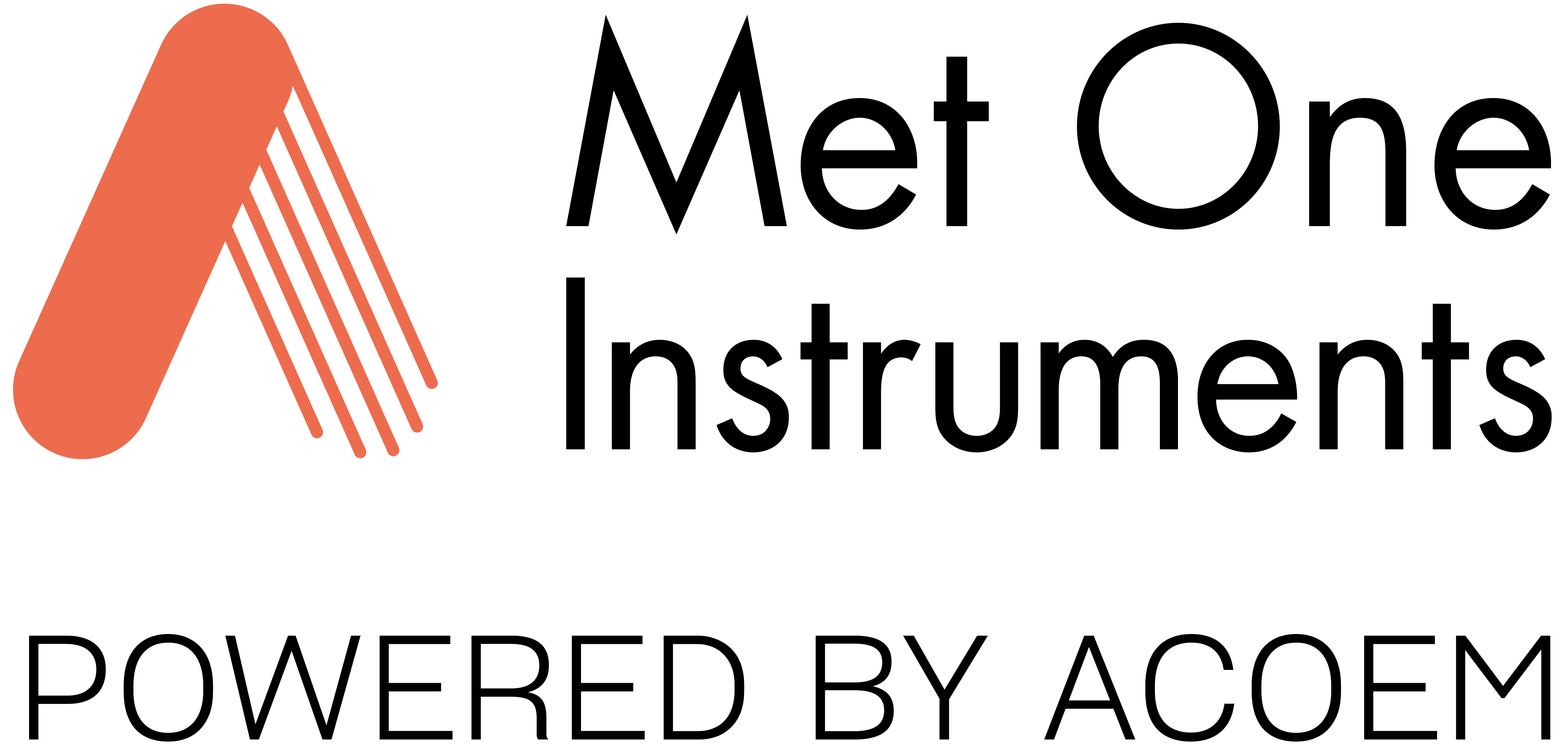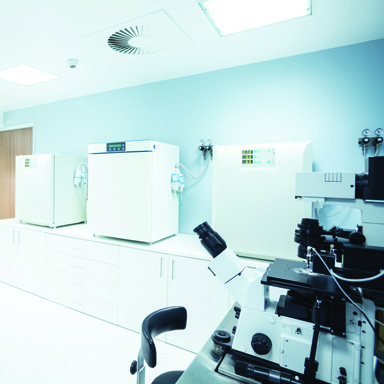Met One Instruments, Inc. Offers a Variety of Cleanroom Air Quality Monitoring Solutions
Particle Counters are used to quantify the discrete number of airborne particles in the environment. Samples are taken from an environment during a specific measurement period or continuously. They typically count and size each particle individually but simultaneously in real-time. Particle Counters are typically used for classification and monitoring. Classification is the process of qualifying an environment for certain tasks by determining the number of particles and sizes using a standard method.
Classification focuses primarily on the ambient or controlled environment. Monitoring focuses primarily on processes and people, as well as the environment. Environmental monitoring is performed on a scheduled basis to determine the stability of an area over time to develop trend data. Process monitoring is performed where relevant activities occur to determine the readiness of a room to carry out a designated task. Particle Counters are deployed extensively as a quality control and yield maximization tool in a wide variety of manufacturing and industrial processes.
Several industries utilize cleanrooms, including manufacturing and research in the following fields:
· Semiconductors
· Biotechnology
· Renewable Energy
· Life Science
· Pharmaceuticals
· Electronics
· Optics
· Military/Aerospace
· Medical
· Food Packaging
· And more.
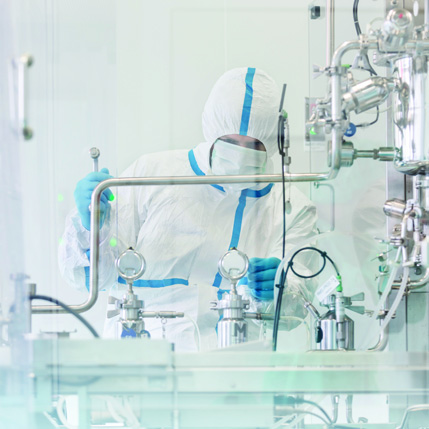
Producers of a variety of sensitive goods are required by regulatory bodies to comply with various standards such as ISO 14644. Additionally, many require clean environments as a matter of best practices to achieve certain internal quality and/or yield objectives. Particle Counters are a key tool for organizations to certify themselves to the ISO 14644 or other international standards.
Businesses that classify themselves as ISO Class 5 and below must demonstrate their compliance every 6 months, and businesses that classify themselves as greater than ISO Class 5 must demonstrate their compliance every 12 months. Properly calibrated and tested (per ISO 21501-4) Particle Counters are used to demonstrate and certify compliance. These same Particle Counters are also used extensively during non-certification events to periodically or continually monitor cleanrooms to verify compliance with regulatory or internal standards.
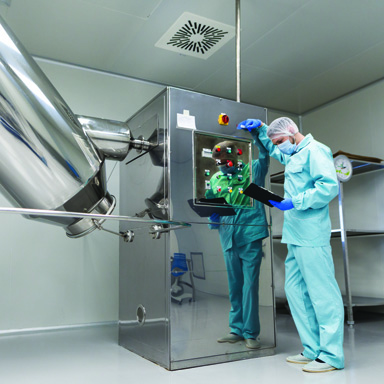
All Met One Instruments, Inc. models meet ISO 14644-1:2015 criteria and can be used in Class 3 through Class 9 cleanrooms. All models can also meet the calibration requirements of ISO 21501-4. Met One Instruments Particle Counters also meet the requirements for the Manufacture of Sterile Medicinal Products per EU GMP Annex I (EMEA) by meeting Grade A through D size and count requirements.

Description of a Cleanroom
A cleanroom has a top to bottom laminar airflow at ISO Class 3 and below. These cleanrooms are normally on raised flooring such that air penetrates holes of the flooring. The idea is that any particles generated in the cleanroom are being pushed straight downwards such that they are flushed out through the raised flooring in the shortest possible path to contamination. This laminar flow of particle-free air is generated via HEPA filters.
Humans are the largest particle generators in a clean room. 100,000 particles can be generated just by the act of sitting. People must wear a clean room suit (aka bunny suit) to minimize contamination. The suit covers the wearer to prevent skin and hair being shed into a clean room environment.
Most cleanrooms are held in positive pressure. This means that the air will flow out of the room instead of in, preventing unfiltered air or air particulates from entering the cleanroom.
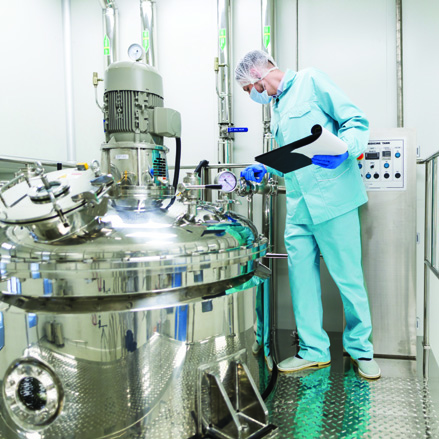
What is Pharmaceuticals USP 797?
The purpose of U.S. Pharmacopeia (USP) 797 is to provide the practice standards to help ensure that compounded sterile preparations are of high quality and sets the standards that apply to all settings in which sterile preparations are compounded. The USP 797 cleanroom requirements are general in nature but refer to ISO-14644 standards for cleanroom requirements. To achieve USP 797 compliance, producers must perform sterile drug compounding within an ISO Class 5, hood environment, enclosed within a larger compounding “Buffer Zone” of ISO Class 7 positive pressure controlled-air environment. In addition, areas where personnel perform hand hygiene and garbing procedures, staging of components, and other high particulate generating activities must be ISO Class 8.
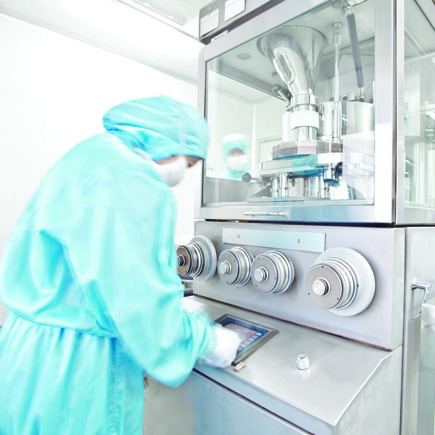
Cleanrooms in Electronics Manufacturing
Particle Counters play a crucial role in monitoring, classifying, and diagnosing the source and complexion of contaminants in cleanroom operations. Electronics manufacturing relies on this information to monitor facility functions such as air filters and pass throughs. They can be used to validate engineering and process controls. It is critical to reduce the number of airborne particles in this industry because yields drop dramatically when components interact with dust, airborne microbes, aerosol particles, and trace moisture. Due to the small pitch of modern electronics, particle laden devices will fail yield due to contamination.
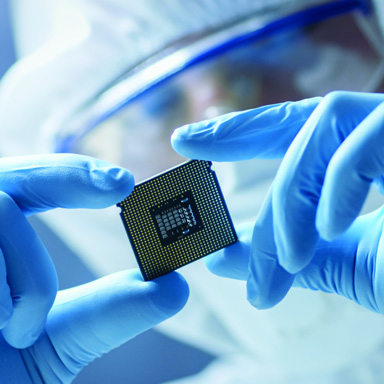
Particle Counters in Healthcare Facilities & Other Sensitive Locations
According to guidelines for Environmental Infection Control in Health-Care Facilities, Recommendations of the Center for Disease Control (CDC) and the Healthcare Infection Control Practices Advisory Committee (HICPAC): “Particulate sampling (i.e., total numbers and size range of particulates) is a practical method for evaluating the infection-control performance of the HVAC system, with an emphasis on filter efficiency in removing respirable particles <5 μm in diameter or larger particles from the air”. Particle Counters can monitor this by documenting a count baseline of an area, detect when airborne particulate levels diverge from normal levels, and give an early warning of underlying issues such as changes in operating procedures and equipment malfunctions.
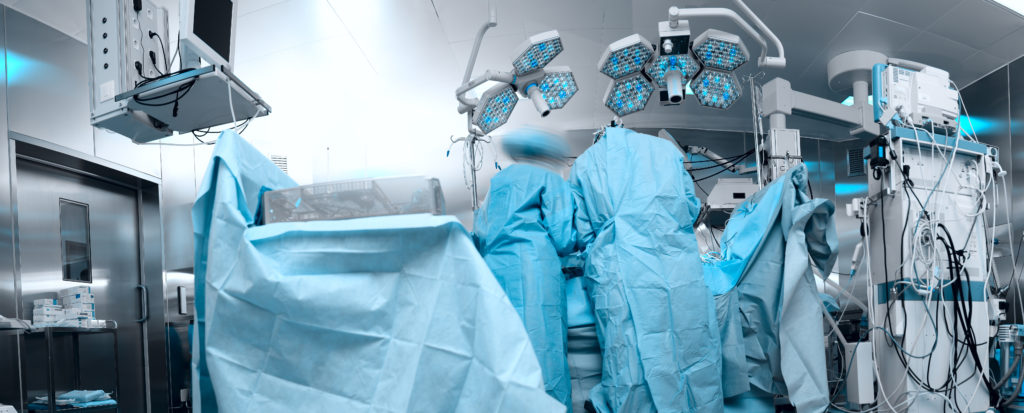
HVAC & Filter Performance ISO 16890
Met One Instruments, Inc. particle counters can be used to classify ISO 16890 and ASHRAE 52.2.
Which Handheld or Benchtop Particle Counter is Suitable for Your Cleanroom Application?
Use this MOI products matrix to determine which handheld or benchtop air monitoring device is appropriate for your application:
Need More Information?
🔗 Learn about Met One's standout cleanroom particle counter, the BT-620.
